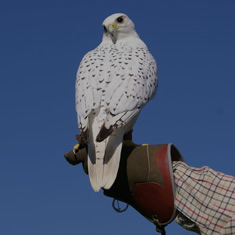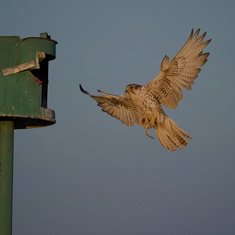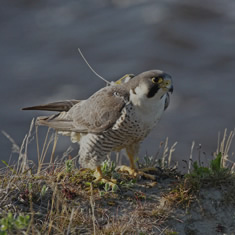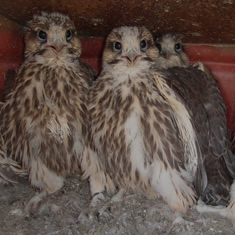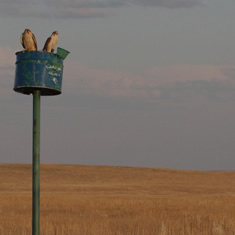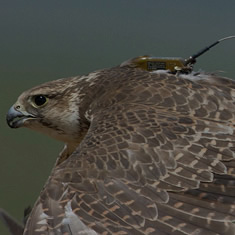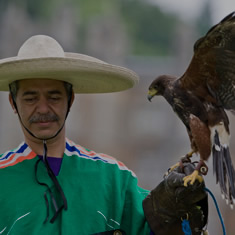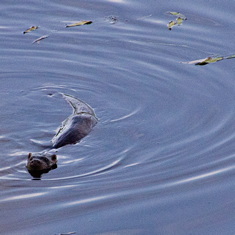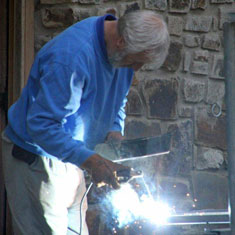- Pond and Lake Construction
The farm has 17 ponds, ranging from small scrapes or waterholes for cattle, to a 1.5 ha (3.3 acre) lake. We also have several small streams and about 1000 metres of river. Rainfall is heavy here, the valleys are glacial with deep beds of clay; all ideal conditions for doing things with water!
We dug our ponds for several reasons: direct or piped sources of water for livestock, amenity and conservation, waterfowl, and for fishing. In doing so we have learnt a lot from experience. These ponds are maturing now and host a huge variety of flora and fauna. They are being used for demonstration sites for field-days for the Tir Gofal habitat management scheme.
A number of species have re-colonised the area, including otters, water rails, dab chicks, moorhens and coots, sedge warblers, sand martins, greylags and a variety of ducks. The main lake now has brown and rainbow trout, eels, a wide range of dragonflies and damselflies and increasing list of plants.
Choosing a Site
If you plan to dig a pond, the first question to ask is: will it help the wildlife, or will it actually be detrimental, perhaps destroying valuable wetland habitat? Choose a site that is relatively undisturbed and ensure that the risk of nutrient enrichment and fertiliser run-off is minimal. If possible, situate the pond in a place that can act as a bridge between different habitats. This kind of setup is useful for species that require suitable habitats in water and on dry land, such as amphibians. Don't dig a pond below overhanging trees as this will increase the silting levels and ultimately result in higher maintenance levels. It will also disturb the water table for the tree roots, causing gradual die off in established trees. Shade can be provided by scrub and reed beds, and by ensuring the pond is open to the south plenty of sunlight during spring and summer will act to warm the water.
Construction, Size and Shape
Ideally, impermeable soil such as clay should be used, thus avoiding the need for expensive artificial liners. It is true that a large lake may incorporate several habitats, including islands. However, a group of several small ponds will often be equally effective, if not more so, in increasing the biodiversity of an area. The shape is crucial, as it is this feature that often depicts whether species will be present of absent. The effective length of a pond/lake perimeter can be increased by creating projecting spits and small recesses. This will also serve to create microhabitats and niches ideal for invertebrate life. The growth of vegetation will provide shelter from both wind and sun.
Depth and Profile
A gradual gradient from a shallow edge to a deeper centre of about 15 degrees is ideal. Shallow edges and muddy shorelines provide the habitat for plant species to establish, which in turn are essential for invertebrate populations of dragonflies and damselflies. The deeper regions provide a refuge for those species that are unable to adapt to more extreme changes during the summer months. Trout for example cannot survive in shallow ponds if the water becomes too warm and de-oxygenated.
Water source
Ponds can obtaine their water from condensation - 'dewponds' or from natural seepage, or they can be an enlargement or dam on an existing watercourse (ie an online pond) or they can extract water from a watercourse and return it down stream (an offline pond). Nowadays in UK you will need a variety of consents - Planning Permission, a Pond Licence, possibly an Abstraction Licence, a Drainage Consent, An Impoundment Licence, and finally, a fish-stocking Licence renewed at each stocking. The licences will probably cost you more than the pond, and will take longer to obtain than it takes to build the pond. In theory, every government department wants you to dig ponds. In practice, be prepared for a blizzard of bureacracy and fees!
Digging the pond
Ideally, choose a machine that can dig your pond without needing to move about. A Himak or tracked digger with a reach of 15 metres can dig a 30 metre diameter pond pretty much by sitting in the middle and scooping it out. Usually a pond this size can be dug in a day, depending on the fiddly bits - outlet pipes, grading and so on. Often spoil is moved from a high part of the pond to a low part, perhaps to make a dam. Remember to scrape off all the topsoil first and stack it to one side. Scrape off the dam area as well and leave a good roughened surfaced to key the dam. Then work with the subsoil to do your major dig. If you have clay, use it to form an impermeable barrier in the dam, and if you are short of clay, use it in the core of the dam where it is well protected from erosion. The clay should be firm when used and tracked in hard in layers no deeper than 15 cm to form a solid barrier. If you are in sandy soil you will have to consider other ways of making the pond water-tight, such as membranes. This can get not only expensive but also technically quite tricky, and you must get good technical advice from the manufacturers for your site.
Drivers often work for the Council or housing industry and have a thing about straight lines. Tell them to think of a pretty girl. This should ensure that you get a pond with plenty of curves and bays which will increase the ratio of shoreline to water. Often getting the levels can be deceiving. Either use a Dumpy Level or on smaller ponds get a length of hose and fill it up with water. Tie one end to a post in the middle at the height you want. Then you can wander around the shoreline marking the chosen water level all the way round.
If you possibly can, fix a pipe so that you can drain your pond completely. This pipe can either be capped off (leaving a marker), or elbowed to the surface as an overflow. You can rotate the elbow to raise or lower the water level and this will be a great help later when carrying out maintainance.
Once the pond is dug, use some of the topsoil to scatter on the bed of the pond. Don't be afraid to make the bed extremely rough. Provided the bed is impermeable you can afford to get the digger to remove single deep scoops randomly across the pond, each one the size of a kitchen table. This will provide a variety of microclimates and places for wildlife. The remainder of the topsoil can be used to cover all other raw worked areas. The residual seed-bed of plants in that topsoil will quickly provide plant cover. Mother Nature is a great healer of wounds. If part of your new shore or dam is erosion prone, thumb in water plants all along. This will quickly generate a protective reed bed, which is better than man-made structures. In places where the shore is steep and liable to collapse, hammer in stakes cut fresh from green willow. Bang them in as close as you like and make sure their feet are in water. They will grow rapidly and lock the bank together.
For larger ponds, it is impossible for a machine to move the earth in one lift. It may need two lifts, or you may need tipper trailers to move the earth. This adds to the expense and the complexity. Half of the time one of the drivers will be twiddling his thumbs, waiting for the other one. Weather will severely affect the working conditions and often make it impossible to use the machinery. Also water will either accumulate in the hole, or be passing through it, and it will require constant planning to keep machines on firm ground. The dam on our main lake is 300 metres long and in place 12-13 metres high, being about 40 metres wide at the base. It took three seasons to complete. So be prepared for a huge difference in labour costs between small ponds and large ones.
Stocking and Planting
Vegetation will typically colonise rapidly from the surrounding margins, or you can transport water and vegetation from an established local pond. The invertebrates and seeds present will help to establish new colonies. Be careful not to introduce invasive species by this method, such as reedmace. Those ponds rich in wildlife will almost certainly have a high percentage of vegetation cover. Open water can be a dangerous place for many species and so if it is necessary to clear vegetation it is advisable to remove only small patches at a time. The first year, your pond will appear raw and open. Then you will have a honeymoon period for three or four years when everything is about right. Then you will suddenly find your pond overgrown and clogged up and you will spend half your summer months clearing weed. This is excellent and cheap therapy for body and soul, so be grateful!
Allow at least one year, prefearably more, for the plants and invertebrates to become established and build up their numbers before stocking with fish. New ponds are a microcosm of new human towns; it's all boom and bust. First one species will get a hold and do really well, then a slower but tougher one starts to take over, within a short space of time there is a whole new dominance heirarchy of plants and organisms. This can take place for years, depending on changes in rainfall and temperature. You soon realise that what appears to be so serene is in fact a battle ground of species competing for resources.
The photos below show us moving plants from an established reed bed in order to generate a new one at a raw new site.

